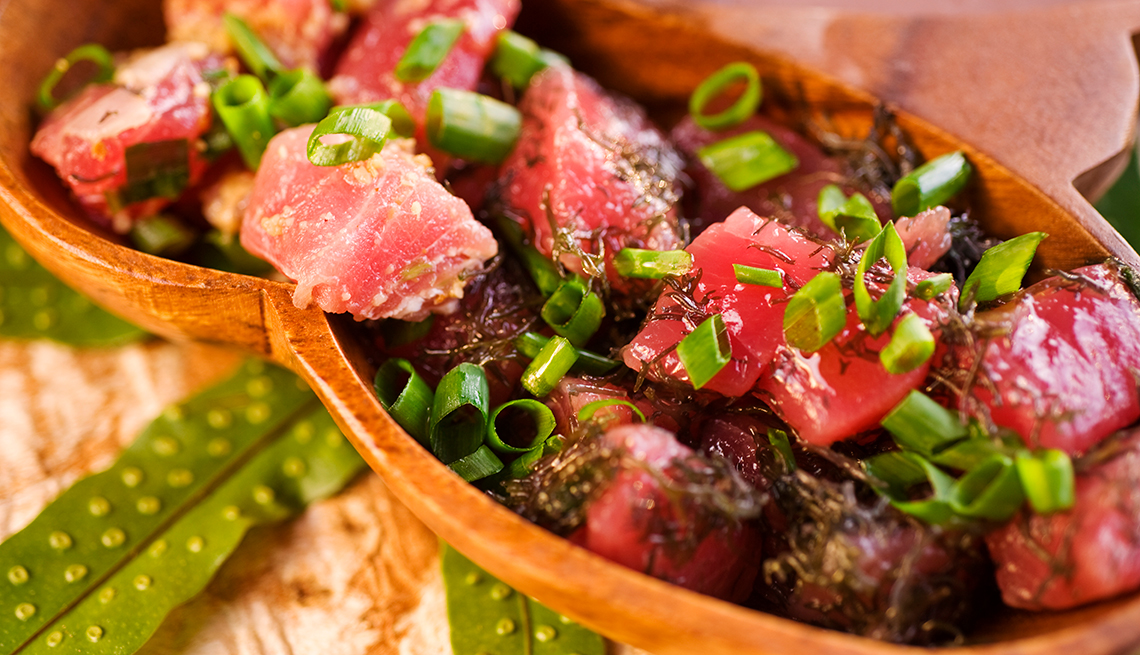AARP Hearing Center
A combo of old- and new-school eats, Hawaii’s local food is a mashup of its cultures: Native Hawaiian dishes like kalua pork (a whole pig or pork butt wrapped in banana leaves and slow-roasted in an imu — a pit dug in the ground and covered with lava rocks) and poi (a traditional purple pudding or paste pounded from the taro plant) mix seamlessly with dishes from Portuguese, Korean, Japanese and Chinese immigrants.
A plate lunch, originated by lunch wagons feeding immigrant plantation workers in the sugarcane and pineapple fields, is now the go-to dish for many locals, consisting of your choice of meat — Korean kalbi ribs, Japanese katsu chicken, kalua pork, or Portuguese sausage, for example — with two scoops of rice and a mayo-based, locally beloved macaroni salad. Variations abound, but a protein and “two scoops rice, one scoop mac salad” still defines island eating, whether at the beach or in the boardroom.
Though mocked on the mainland, Spam is so popular in Hawaii it even has its own annual street festival every April — Waikiki’s Spam Jam. The pink lunch meat is preferred in the form of the local staple, Spam musubi, a slice of Spam in nori-wrapped rice. Its roots date back to World War II, when canned meat came with the U.S. troops to the islands. Some historians believe musubi found its calling in Japanese internment camps as a reliable and relatively shelf-stable, pocket-sized snack. Just follow after-school kids into the nearest 7-11 to find the best ones.
And don’t miss out on the breakfast favorite loco moco — rice (fried, white or kimchi fried) topped with a hamburger patty and an egg, and soaked in brown gravy. While posh hotels include it on their menus, the best version is found in local diners like Harry’s Cafe in the Kakaako neighborhood.
Where to eat
One need not spend a fortune to experience Hawaii’s tropical bounty. With the arrival of the farm-to-table movement in the Kaimuki and Chinatown neighborhoods, chefs are celebrating the best of Hawaii’s fish, greens, vegetables and fruit just about everywhere. Discover ahi (tuna) seared rare with mango chutney, Chinese-style steamed opah (moonfish) with julienne daikon, ginger and lemongrass, or melt-in-your-mouth opakapaka (pink snapper) with a salad of local baby greens, watermelon radishes and avocado with a citron-vinaigrette dressing. Enjoy local Kona coffee with local fresh fruits — pineapple, apple bananas, mango, papaya, lilikoi and all varieties of citrus — either fresh on the plate or in luscious sorbets and ice creams.



































































